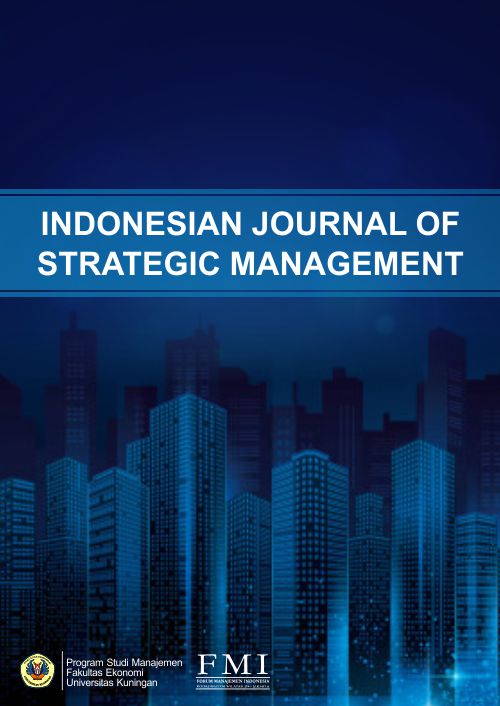PENERAPAN SISTEM INFORMASI KEUANGAN PADA PERUSAHAAN PT PLN DAN PT TELKOM INDONESIA
Abstrak
In the era of technology, financial information systems have become a vital element for companies across various sectors, including PT PLN and PT Telkom Indonesia. This article aims to compare the implementation of financial information systems in these two companies while addressing the challenges and proposed solutions. Using a qualitative method with a descriptive, verificative approach and literature studies, it was found that PT PLN focuses more on centralized control and cashless transactions to ensure security and efficiency in customer interactions. In contrast, PT Telkom prioritizes detailed recording and internal cash management to improve accuracy and operational effectiveness. Challenges in implementation include human error, data breaches, complex user interfaces, and the risk of virus infections. Proposed solutions include employee training, access restrictions, user interface socialization, and strengthening digital security to ensure the system's sustainability and effectivenessReferensi
Dina Novita, S. S. (2024). Solusi Pintar Mengelola Keuangan untuk Anak Usia Dini dan Milenial di Yayasan Latar Hati Sawangan. Jurnal Pengabdian Tangerang Selatan: JURANTAS, 100-106.
Fitriyah, M. (2024). Analisis perbandingan kelebihan dan kekurangan sistem informasi akuntansi terpusat dan terdistribusi. Ilmudata, 4(1), 1–21.
Gracia, M. M., Nangoi, G. B., & Tirayoh, V. Z. (2016). Evaluasi Penerapan Sistem Informasi Akuntansi Atas Siklus Pendapatan pada PT. PLN (Persero) Area Manado. Jurnal Riset Ekonomi, Manajemen, Bisnis dan Akuntansi, 826-836.
Lendo, P., Ilat, V., & Alexander, S. W. (2022). Evaluasi Penerapan Sistem Informasi Akuntansi Penerimaan Kas (Studi Kasus pada PT Telkom Witel Sulut Malut). Jurnal LPPM Bidang EkoSosBudKum (Ekonomi, Sosial, Budaya, dan Hukum), 659-666.
Maulana, Y., Masruroh, R., & Komarudin, M. N. (2024). The Effect of Financial Fundamentals on Stock Returns with Sustainability as a Intervening Variable. Integrated Journal of Business and Economics (IJBE), 8(3), 347–363. https://doi.org/10.33019/ijbe.v8i3.932
Maulana, Y., Nugraha, N., Disman, D., & Sari, M. (2023). The Effect of Financial Fundamentals on Stock Returns with Sustainability as a Intervening Variable. Jurnal Ilmu Keuangan Dan Perbankan (JIKA), 12(2), 317–328. https://doi.org/10.34010/jika.v12i2.10045
Maulana, Y., Harjadi, D., & Kherunnisa. (2022). Analisis Perbandingan Kinerja Keuangan Sebelum dan Setelah Akuisisi pada Perusahaan Jasa yang terdaftar di Bursa Efek Indonesia. Jurnal Ekonomi, Akuntansi & Manajemen, 2(3).
Maydianto, M. R. (2021). Rancang Bangun Sistem Informasi Point of Sale dengan Framework Codeigniter Pada CV Powershop. Jurnal Comasie, 50-59.
Pane, W. A. (2023). Sistem Informasi Keuangan . Circle Archive, 1-14.
PT PLN Indonesia. (2021). COMPANY PROFILE PT PLN. Retrieved from PT PLN: https://web.pln.co.id/statics/uploads/2022/08/20220813_PLN-Compro-2021-Final.pdf
PT Telkom Indonesia. (2024). Sejarah Telkom Indonesia. (PT Telkom) Retrieved September 07, 2024, from https://www.telkom.co.id/sites
Sihaloho, E. D., Ilat, V., & Suwetja, I. G. (2022). Analisis Sistem Informasi Akuntansi Penerimaan dan Pengeluaran Kas Pada Perusahaan Listrik Negara (Persero) Unit Induk Wilayah Sulawesi Utara, Sulawesi Tengah dan Gorontalo . Jurnal LPPM Bidang EkoSosBudKum (Ekonomi, Sosial, Budaya, dan Hukum), 1183-1190.
Simanungkalit, M. (2012). Konsep Dasar Sistem Informasi. Lect. Notes Sist. Inf, 1-10.
Sitorus, S. P., & Rumapea, M. (2017). Sistem Informasi Akuntansi Pendapatan dan Penerimaan Kas pada PT. Telkom Medan. Methomika, 1-9.
Staubus, G. J. (1980). An Accounting Concept of Revenue.
Tierza Widy Chrisanty, &. J. (2023). Analisis Manajemen Risiko Sistem Infomasi Menggunakan ISO 31000:2018 di PT. XYZ. Jurnal Sistem Informasi, 372-381.
Wiharno, H., Komarudin, M. N., Saepudin, S. E. A., & Maulana, Y. (2021). Manajamen Keuangan. Lakeisha.

